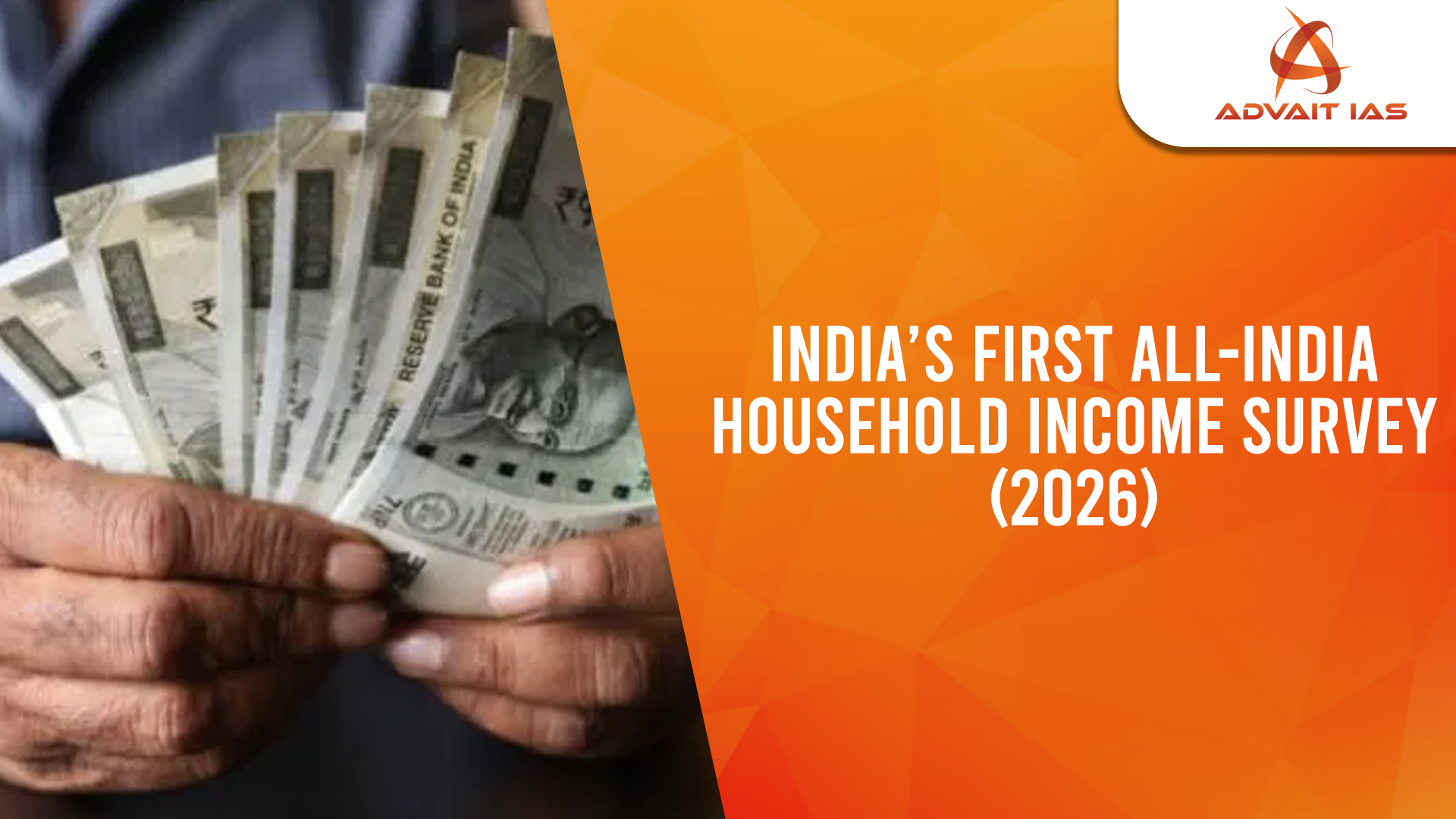The Ministry of Statistics and Programme Implementation (MoSPI) has announced the launch of India’s first-ever comprehensive Household Income Survey in 2026.
- The survey will be conducted by the National Sample Survey (NSS) under the Field Operations Division of the National Statistical Office (NSO).
What is the Household Income Survey?
- A large-scale statistical exercise designed to collect reliable household income data from diverse sources:
- Wages and salaries
- Business income
- Agricultural earnings
- Rental/property income
- Remittances and other transfers
- It will complement and enhance the existing household consumption and expenditure surveys conducted by NSO.
Significance and Need:
- Addressing Income-Consumption Mismatch
- Since the 1950s, India has not conducted a national income survey due to:
- Operational difficulties
- Inconsistent self-reported income data
- Mismatch between income, consumption, and savings
- Adopting Global Best Practices
- Modelled on:
- USA’s Current Population Survey
- Canadian Income Survey
- Australia’s Survey of Income and Housing
- Filling Key Data Gaps
- India’s economic analysis has long relied on consumption expenditure as a proxy for income.
- Lack of granular income data hindered welfare targeting, inequality estimation, and labour policy reform.
Key Features of the Survey:
- Technology & Informal Sector Focus:
- For the first time, the survey will assess the impact of technology on income patterns.
- Special emphasis on:
- Gig economy income
- Freelance/digital platform workers
- Informal wage earnings
- Data on Income Distribution:
- Aim to identify inequalities, income disparities across regions and sectors, and gender wage gaps.
- Support for Evidence-based Policymaking:
- Critical input for:
- Tax policy
- Welfare subsidies
- Social safety nets
- Labour market planning
- Critical input for:
Institutional Framework:
- NSS under NSO (MoSPI):
- NSSO (now NSO) has been the backbone of India’s statistical system since 1950.
- Known for nationwide surveys like:
- Consumer Expenditure Survey
- Employment-Unemployment Survey
- Health and Education Surveys
Expected Benefits:
- Better Measurement of Inequality:
- Real-time understanding of top-end and bottom-end income shares, enabling more nuanced policy.
- Improved Welfare Targeting:
- Will help identify income-deprived households not captured by consumption surveys.
- Boost to Data Transparency:
- Enhances India’s credibility in global comparisons such as:
- World Bank’s income classification
- OECD’s inequality indexes
- UNDP’s Human Development Reports
- Enhances India’s credibility in global comparisons such as:
The 2026 All-India Household Income Survey marks a watershed moment in India’s data architecture, aligning statistical practices with global standards. It will provide critical insights into India’s income landscape, empowering evidence-based policymaking for inclusive and equitable growth.






